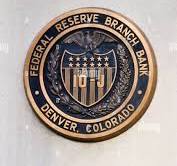March 11 (Reuters) – A Federal Reserve facility launched in haste a year ago amid the heavy stress triggered by Silicon Valley Bank’s collapse closes for new business on Monday, amid evidence it helped turn the tide of trouble that risked derailing the economy and upending the central bank’s efforts to lower inflation.
A year after the Bank Term Funding Program was unveiled on a Sunday afternoon — when regulators feared a systemwide bank run might unfold the next day — deposits have stabilized, bank loan books overall are growing, no bank of meaningful size has failed in 10 months, and the Fed was not forced to change its monetary policy footing.
The program “certainly worked” given the rebound of the banking sector, said Steven Kelly, associate director of research at the Yale School of Management’s Program on Financial Stability.
But the sunset of new lending at the BTFP is raising questions about how the central bank will respond to the inevitable return one day of banking trouble. Kelly and others think the Fed would not want to go down this route again if it could avoid it. That’s bringing fresh attention to the Fed’s discount window, its long-running and often shunned bank lending facility, seen as the lender of last resort.
The BTFP tackled a liquidity crunch after the world’s first social media-induced bank run put SVB out of business in a matter of days, with a clutch of other banks failing in its wake. To ensure deposit-taking banks could get the money they needed, the BTFP offered loans on eligible collateral without the penalties usually imposed by Fed emergency lending, doing so on relatively cheap terms.
That configuration generated large amounts of borrowing even when the most acute phase of the crisis was in the rear view mirror. Jumps in borrowing at the discount window last spring quickly abated to normal levels while BTFP borrowing ground ever higher as banks appeared to be exploiting its low rate relative to other sources of short-term funding.









